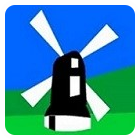Safeguarding
What is safeguarding?
The school role in safeguarding is to identify signs of harm or neglect, and making sure staff are trained to identify and report concerns to the designated safeguarding leads. Schools follow guidelines to protect
children and work in partnership with other agencies when needed. School often facilitates support for
families in times of need.
What is a designated safeguarding lead?
A Designated Safeguarding Lead (DSL) is a specially trained member of staff responsible for overseeing
safeguarding and child protection concerns, ensuring children are safe and liaising with external services
such as family support and social care.
Who are Brookmead’s DSLs?
Mrs Taylor (headteacher), Mrs Clarke (deputy headteacher), Miss Singer (nurture lead), Mrs Kosky (phase lead), Mrs Brooks (SENDCo), Mrs Rutherford (office manager)
What do I do if I am worried about the safety of a child or have concerns for a family where the children attend Brookmead School?
Speak with one of the DSLs who are named above. Alternatively, you can make an anonymous referral via Buckinghamshire First Response on 01296 383962.
Who decides whether social care will support a family?
This decision is made by social care themselves. School present concerns raised to them, to social care,
who make a final decision as to whether any additional support will be put in place.
What is a safeguarding concern in the local area?
County Lines is a concern within the local vicinity. County lines is a term used when criminal gangs from big cities exploit young people to transport and sell drugs in smaller towns or rural areas. Children are often lured into becoming dealers for county lines gangs through bribery, such as offers of money, gifts, or a sense of belonging, which later turns into manipulation and control. These gangs often use threats, violence, or manipulation to control the young people for example: stating that they gave them a gift and now the child owes them a favour.
Cuckooing happens when these gangs take over someone’s home, often belonging to a vulnerable person, to use it as a base for drug dealing. Both are dangerous situations that can put children and others at serious risk.
Cuckooing can be identified by noticing unusual activity at a home, such as a sudden increase in visitors,
especially at odd hours. The vulnerable person living there may seem anxious, withdrawn, or have
unfamiliar people staying with them. There might also be signs of neglect or deterioration in the home’s
condition, as well as reports of antisocial behaviour or drug-related activity in the area.
-
Brookmead - online safety FINAL 2024
download_for_offline
download_for_offlineBrookmead - online safety FINAL 2024
- Brookmead cp-framework-policy-2024-final draft download_for_offline
download_for_offlineBrookmead cp-framework-policy-2024-final draft
- Brookmead cp-framework-policy-2024-final draft download_for_offline

